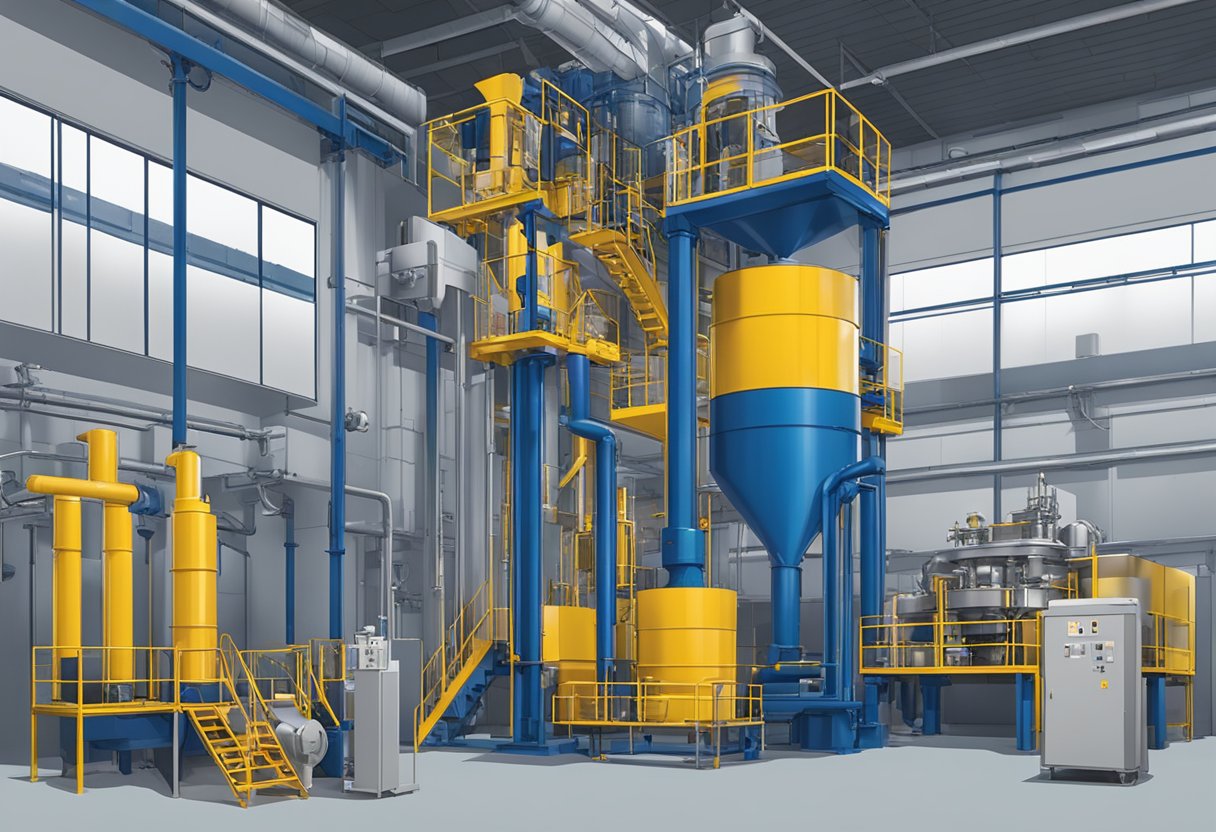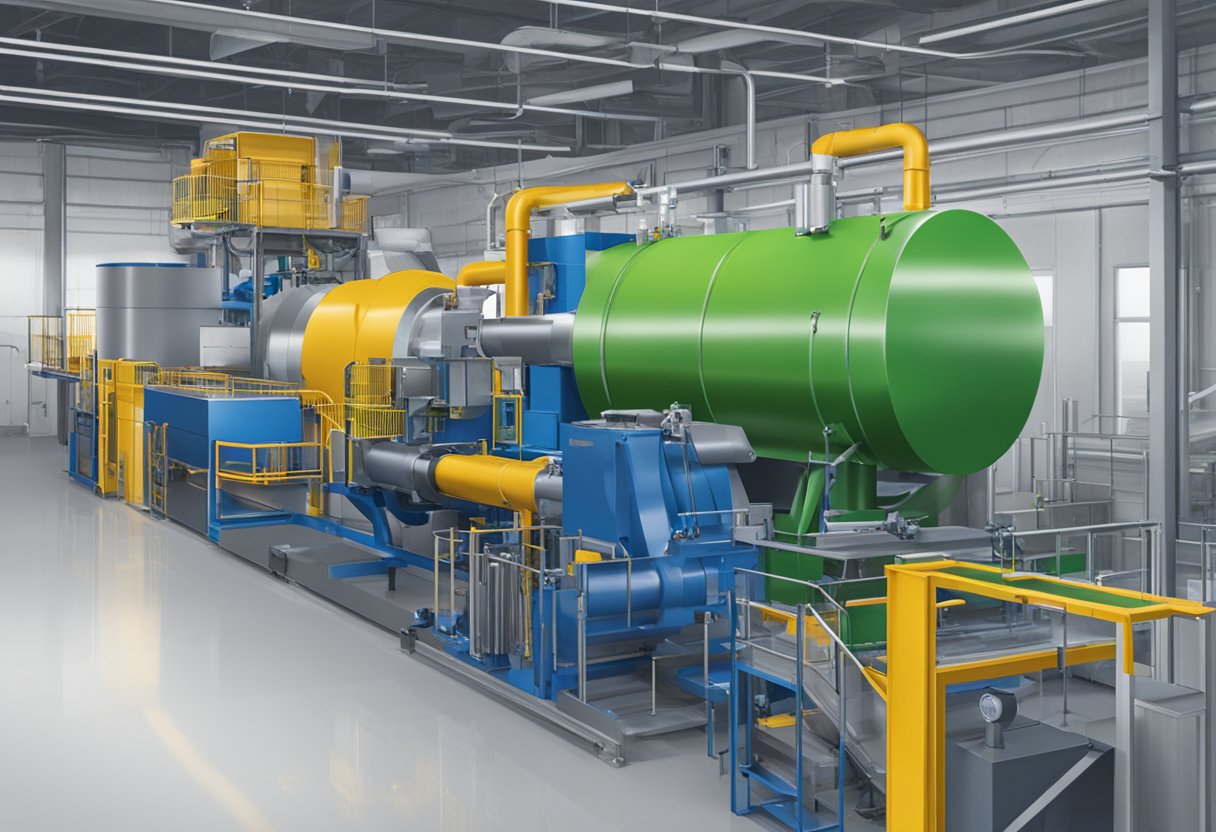TBBS Rubber Accelerator: Benefits, Uses, and Applications
19/01/2024
TBBS rubber accelerator is a widely used chemical compound in the rubber industry. It is a type of accelerator that is used to speed up the vulcanization process of rubber. This process involves the addition of sulfur to rubber, which creates a chemical bond between the rubber molecules, making it stronger and more durable.

TBBS rubber accelerator is known for its high efficiency and effectiveness in the vulcanization process. It is often used in the production of various rubber products, including tires, hoses, and conveyor belts. The use of TBBS rubber accelerator allows for faster production times and increased productivity in the rubber industry.
Overall, TBBS rubber accelerator is an important chemical compound in the rubber industry, playing a crucial role in the vulcanization process of rubber. Its high efficiency and effectiveness make it a popular choice among rubber manufacturers, helping to increase productivity and improve the quality of rubber products.
Chemical Properties of TBBS

TBBS, also known as N-tert-butyl-2-benzothiazolesulfenamide, is a rubber accelerator that is widely used in the production of tires, hoses, belts, and other rubber products. It is a white to light yellow powder with a melting point of 104-108°C and a molecular weight of 238.37 g/mol.
TBBS is soluble in benzene, chloroform, carbon disulfide, acetone, and ethanol, but insoluble in water. It has a slightly bitter taste and a faint odor. TBBS is stable under normal conditions of storage and handling, but it may decompose when exposed to heat, light, or moisture.
TBBS belongs to the class of sulfenamides, which are widely used accelerators in the rubber industry. It is a delayed-action accelerator that improves the vulcanization rate and enhances the mechanical properties of rubber products. TBBS is also known for its low toxicity and good scorch safety, which makes it a preferred choice for many rubber manufacturers.
In summary, TBBS is a white to light yellow powder with a melting point of 104-108°C. It is soluble in many organic solvents but insoluble in water. TBBS is a delayed-action accelerator that improves the vulcanization rate and enhances the mechanical properties of rubber products. It is a preferred choice for many rubber manufacturers due to its low toxicity and good scorch safety.
Production Process of TBBS

TBBS (N-tert-butyl-2-benzothiazolesulfenamide) is a rubber accelerator that is widely used in the production of tires, rubber pipes, and other rubber products. The production process of TBBS involves several steps, including:
- Nitration: In this step, benzothiazole is nitrated to form 2-nitrobenzothiazole. The reaction is carried out using nitric acid and sulfuric acid as catalysts. The yield of this step is around 90%.
- Reduction: The 2-nitrobenzothiazole is then reduced to form 2-aminobenzothiazole using hydrogen gas and a nickel catalyst. The yield of this step is around 95%.
- Alkylation: The 2-aminobenzothiazole is then alkylated with tert-butyl chloride to form N-tert-butyl-2-benzothiazolesulfenamide (TBBS). The reaction is carried out in the presence of a base such as sodium hydroxide. The yield of this step is around 80%.
- Purification: The crude TBBS is then purified using a series of processes such as filtration, washing, and crystallization. The final product is a white to light yellow powder with a melting point of around 104-108°C.
The production process of TBBS is complex and requires careful control of reaction conditions to ensure high yield and purity. The use of advanced technology and equipment has enabled manufacturers to produce TBBS efficiently and cost-effectively.
Applications of TBBS in Rubber Manufacturing

TBBS, or N-tert-butyl-2-benzothiazolesulfenamide, is a rubber accelerator widely used in the production of tires, hoses, and other rubber products. This section will outline some of the key applications of TBBS in rubber manufacturing.
One of the primary benefits of TBBS is its ability to enhance the curing process of rubber. When added to rubber compounds, TBBS accelerates the cross-linking reaction between rubber molecules, resulting in a faster and more efficient curing process. This, in turn, leads to improved product quality, reduced production time, and increased throughput.
In addition to its curing properties, TBBS also offers excellent scorch resistance. This means that it can be added to rubber compounds without the risk of premature vulcanization, which can occur when rubber is exposed to high temperatures during processing. As a result, TBBS is particularly useful in the production of high-performance rubber products that require precise control over the curing process.
TBBS is also known for its ability to improve the mechanical properties of rubber products. For example, it can enhance the tensile strength, elongation at break, and tear resistance of rubber compounds, making them more durable and long-lasting. This makes it a popular choice for the production of tires, which require high levels of strength and durability to withstand the demands of the road.
Overall, TBBS is a versatile and highly effective rubber accelerator that offers a wide range of benefits to manufacturers of rubber products. Its ability to enhance the curing process, provide scorch resistance, and improve mechanical properties make it an essential component in the production of high-quality rubber products.
Health and Safety Considerations

TBBS rubber accelerator is generally considered safe when handled and used properly. However, as with any chemical substance, there are certain health and safety considerations that should be taken into account.
Personal Protective Equipment
When handling TBBS, it is important to wear appropriate personal protective equipment (PPE), including gloves, safety glasses, and a lab coat or apron. If the substance comes into contact with the skin, it should be washed off immediately with soap and water.
Inhalation
Inhalation of TBBS dust or vapors should be avoided, as it can cause respiratory irritation. If working with the substance in an area with poor ventilation, a respirator may be necessary.
Fire Hazard
TBBS is not considered highly flammable, but it can contribute to the intensity of a fire. It is important to store the substance in a cool, dry place away from sources of heat or ignition.
Environmental Considerations
TBBS is not known to be harmful to the environment when used and disposed of properly. However, it should not be released into the environment in large quantities.
Overall, by following proper handling and storage procedures, TBBS rubber accelerator can be used safely and effectively in rubber manufacturing processes.
Environmental Impact of TBBS
TBBS rubber accelerator has been used extensively in the rubber industry for many years. However, its impact on the environment has been a growing concern. This section will discuss the environmental impact of TBBS in detail.
Pollution
One of the main environmental impacts of TBBS is pollution. During the manufacturing process, TBBS releases pollutants into the air and water. These pollutants can cause harm to the environment and human health. The release of these pollutants can also contribute to global warming and climate change.
Waste
Another environmental impact of TBBS is waste. The manufacturing process generates waste that can be difficult to dispose of. This waste can also contain harmful chemicals that can harm the environment. Proper disposal methods must be used to prevent the release of these chemicals into the environment.
Recycling
One way to reduce the environmental impact of TBBS is through recycling. Recycling can help reduce waste and prevent harmful chemicals from being released into the environment. Many rubber manufacturers have implemented recycling programs to reduce their environmental impact.
In conclusion, the environmental impact of TBBS is a growing concern. It is important for rubber manufacturers to take steps to reduce their environmental impact through proper waste disposal and recycling programs.
Regulatory Framework Governing TBBS Usage
TBBS rubber accelerator is regulated by various agencies and organizations to ensure its safe and proper usage. The following regulatory bodies have been involved in setting guidelines and regulations for TBBS:
International Agency for Research on Cancer (IARC)
IARC has classified N-tert-butyl-2-benzothiazolesulfenamide (TBBS) as a Group 2B carcinogen, which means it is possibly carcinogenic to humans. This classification was based on limited evidence from animal studies.
European Chemicals Agency (ECHA)
ECHA has classified TBBS as a substance of very high concern (SVHC) due to its classification as a carcinogen. This classification triggers various regulatory requirements, such as the need for authorization to use the substance in the European Union.
United States Environmental Protection Agency (EPA)
EPA has not classified TBBS as a carcinogen, but it has set limits on its usage in certain applications. For example, TBBS is not allowed to be used as a pesticide active ingredient in the United States.
Other Regulatory Bodies
Other regulatory bodies, such as the National Institute for Occupational Safety and Health (NIOSH) and the Occupational Safety and Health Administration (OSHA), have also set guidelines and regulations for the usage of TBBS in the workplace to protect workers from potential health hazards.
Overall, the regulatory framework governing TBBS usage is designed to ensure its safe and responsible usage while minimizing potential health and environmental risks.
Global Market Trends for TBBS
TBBS, or N-tert-butyl-2-benzothiazolesulfenamide, is a widely used rubber accelerator in the global market. The demand for TBBS is driven by the growth of the automotive and tire industries, which are the major end-users of rubber products.
According to a report by Market Research Future, the global TBBS market is expected to grow at a CAGR of 5.6% during the forecast period of 2017-2023. The report also states that the Asia-Pacific region is expected to dominate the market due to the growing demand for rubber products in countries such as China and India.
In addition, the report highlights the increasing focus on sustainability and environmental regulations in the rubber industry, which is driving the demand for eco-friendly rubber accelerators such as TBBS. This trend is expected to further boost the growth of the TBBS market in the coming years.
Furthermore, the report identifies key players in the global TBBS market, including Lanxess AG, Eastman Chemical Company, and Arkema Group. These companies are investing in research and development to improve the performance and efficiency of TBBS and to develop new products to meet the evolving needs of the market.
Overall, the global market trends for TBBS are positive, driven by the growth of the automotive and tire industries, increasing demand for eco-friendly rubber accelerators, and investments in research and development by key players in the market.
Future Developments in TBBS Accelerators
TBBS accelerators have been widely used in the rubber industry for its excellent performance in improving the vulcanization rate and mechanical properties of rubber products. As the demand for high-performance rubber products continues to grow, the development of TBBS accelerators is also advancing.
One of the main focuses of future TBBS accelerator development is to improve the efficiency of vulcanization. Researchers are exploring new methods to enhance the activation of TBBS accelerators and shorten the vulcanization time. By improving the efficiency of TBBS accelerators, manufacturers can reduce production costs and improve the quality of rubber products.
Another area of development is to improve the compatibility of TBBS accelerators with other rubber additives. The compatibility of TBBS accelerators with other additives can affect the performance of rubber products. Therefore, researchers are working to develop new TBBS accelerators that can be easily mixed with other additives without affecting the vulcanization rate or mechanical properties of rubber products.
Furthermore, environmental concerns are also driving the development of TBBS accelerators. As the demand for environmentally friendly rubber products increases, manufacturers are looking for alternatives to traditional TBBS accelerators that contain harmful chemicals. Researchers are exploring new materials and technologies to develop eco-friendly TBBS accelerators that can meet the requirements of the market and protect the environment.
In conclusion, the future of TBBS accelerators is promising, with ongoing research and development in the areas of efficiency, compatibility, and environmental sustainability. These developments will continue to drive the rubber industry forward and provide high-performance and eco-friendly rubber products to meet the needs of consumers.
Challenges and Opportunities in TBBS Industry
The TBBS (N-tert-butyl-2-benzothiazolesulfenamide) industry is facing several challenges and opportunities in today’s market. The primary challenge is the increasing demand for eco-friendly and sustainable products. TBBS is a widely used rubber accelerator, and its production involves the use of hazardous chemicals and generates significant waste. Therefore, manufacturers are under pressure to develop eco-friendly alternatives to TBBS.
Another challenge is the fluctuation in raw material prices. The price of TBBS is heavily dependent on the price of its raw materials, such as benzothiazole and tert-butylamine. Any fluctuations in the prices of these raw materials can significantly impact the cost of production, and manufacturers need to find ways to manage these price fluctuations effectively.
Despite these challenges, the TBBS industry also presents several opportunities. One of the significant opportunities is the growing demand for high-performance rubber products. TBBS is an essential component in the production of high-performance rubber products, such as tires, conveyor belts, and industrial hoses. As the demand for these products continues to grow, the demand for TBBS is also expected to increase.
Another opportunity is the increasing demand for TBBS in emerging economies. The automotive and construction industries in emerging economies are growing rapidly, and this is expected to drive the demand for rubber products, thereby increasing the demand for TBBS.
In conclusion, the TBBS industry is facing several challenges and opportunities. Manufacturers need to find ways to develop eco-friendly alternatives to TBBS and manage the fluctuation in raw material prices effectively. However, the growing demand for high-performance rubber products and the increasing demand for TBBS in emerging economies present significant opportunities for the industry.




